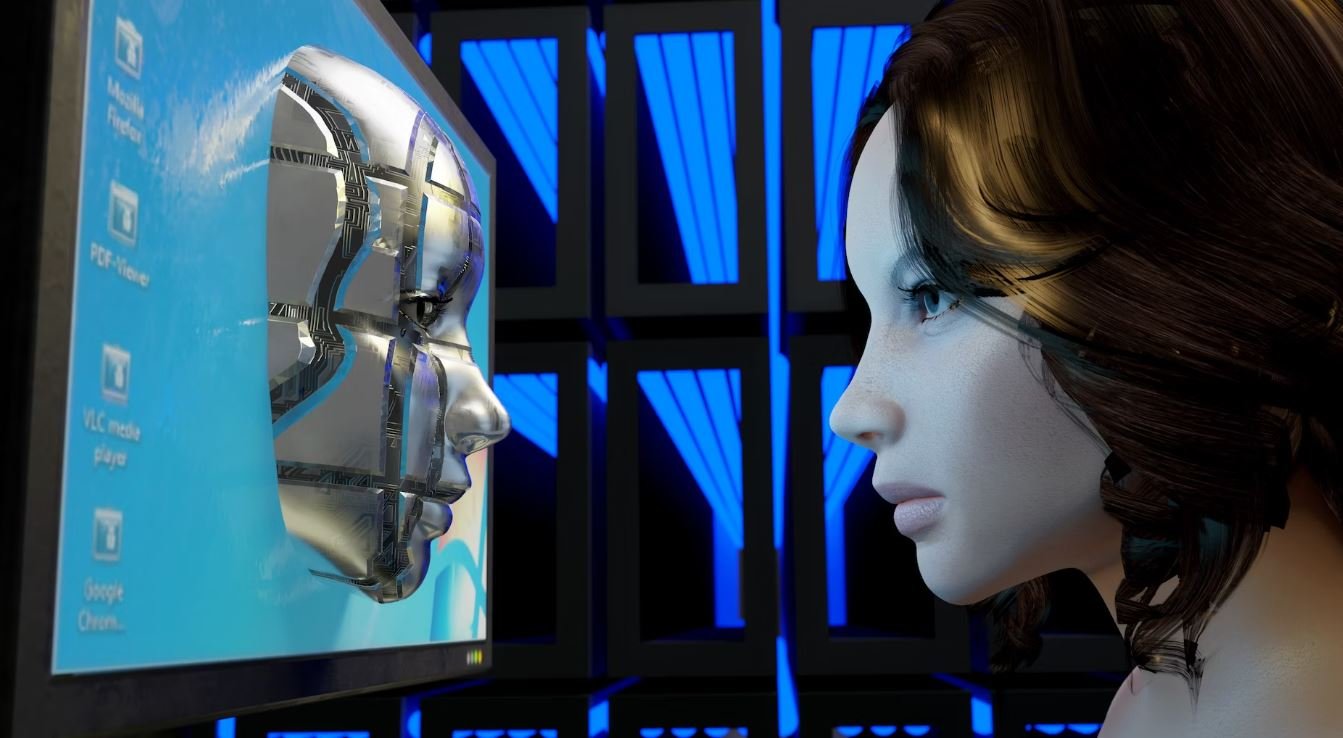AI-Driven Automation
Artificial Intelligence (AI) is no longer just a concept confined to science fiction; it has become a reality with numerous practical applications. One such application is AI-driven automation, which is revolutionizing various industries. By leveraging AI algorithms, businesses can automate repetitive tasks, enhance efficiency, and improve overall productivity.
Key Takeaways:
- AI-driven automation is revolutionizing industries.
- It helps businesses automate repetitive tasks.
- AI algorithms enhance efficiency and productivity.
**AI-driven automation allows businesses to streamline their operations by automating repetitive tasks** and freeing up human resources to focus on more complex and strategic initiatives. With the advancements in machine learning and natural language processing, AI algorithms can now perform tasks that previously required human intervention, such as data entry, customer support, and content generation. This not only improves efficiency but also eliminates the potential for human errors, resulting in better accuracy and reliability.
**One interesting aspect of AI-driven automation is its ability to continuously learn and improve**. AI algorithms can analyze vast amounts of data, identify patterns, and make predictions based on historical information. This enables businesses to make data-driven decisions and optimize their processes. As AI systems interact and learn from the data, they can adapt and improve their performance over time, making them invaluable assets for businesses seeking to stay ahead in a rapidly evolving market.
The Benefits of AI-Driven Automation
- Enhanced productivity and efficiency.
- Reduced costs through labor savings.
- Improved accuracy and reliability.
| Industry | Automation Impact |
|---|---|
| Manufacturing | Improved production efficiency and quality control. |
| Healthcare | Automated administrative tasks, better patient care, and diagnosis. |
| Finance | Faster transactions, fraud detection, and risk assessment. |
**AI-driven automation has wide-ranging benefits across multiple industries**. In manufacturing, it can optimize production processes, improve quality control, and reduce downtime. In healthcare, automation can streamline administrative tasks, allowing healthcare professionals to focus more on patient care. In finance, AI-powered systems can facilitate faster and more secure transactions, detect fraud, and assess risks in real-time.
Challenges and Considerations
- Ethical implications of automation and AI.
- Potential job displacement and reskilling requirements.
- Data security and privacy concerns.
**While AI-driven automation offers many benefits, it also presents challenges and considerations that businesses need to address**. Ethical implications arise from decisions made by AI systems, as well as concerns surrounding job displacements and the need for reskilling workers. Additionally, data security and privacy become critical aspects to consider when deploying AI-driven automation, as sensitive information may be processed and stored by these systems.
| Country | AI Automation Adoption |
|---|---|
| United States | High usage in manufacturing, healthcare, and finance. |
| China | Leveraging AI automation in manufacturing and transportation. |
| Germany | Embracing automation in production and logistics. |
**AI-driven automation adoption varies across different countries**. The United States sees high usage in manufacturing, healthcare, and finance sectors. China leverages AI automation primarily in manufacturing and transportation, while Germany embraces automation in production and logistics. These varying adoption rates depend on factors such as economic priorities, technological infrastructure, and government policies.
The Future of AI-Driven Automation
- Continued advancements in AI algorithms.
- Integration of AI with Internet of Things (IoT) devices.
- Expansion to new industries and applications.
**The future of AI-driven automation holds promising possibilities**. As AI algorithms continue to advance, businesses can expect even smarter and more capable automation systems. The integration of AI with Internet of Things (IoT) devices will further enhance automation capabilities, enabling seamless interaction and communication among interconnected devices. Moreover, AI-driven automation is likely to expand its footprint into new industries and applications, enabling businesses to unlock novel opportunities for growth and efficiency.
With AI-driven automation becoming increasingly prevalent, businesses across sectors are gaining a competitive edge by harnessing the power of AI algorithms. The transformative impact of automation not only improves efficiency and productivity, but also creates new opportunities for innovation and growth. Embracing AI-driven automation is no longer an option for businesses; it is a necessity to thrive in the digital age.

Common Misconceptions
Misconception 1: AI-Driven Automation will Replace All Jobs
One common misconception about AI-driven automation is that it will replace all jobs, leaving humans unemployed. However, this is not entirely true. While AI may automate certain tasks and job roles, it will also create new job opportunities.
- AI will create jobs in areas such as AI development and management.
- Advanced skills like creativity, critical thinking, and problem-solving will still be in demand.
- Human involvement will be necessary in complex decision-making situations.
Misconception 2: AI-Driven Automation is Too Expensive for Small Businesses
Another misconception is that AI-driven automation is only feasible for large corporations with substantial budgets. However, AI technologies have become increasingly accessible and affordable, even for small businesses.
- Cloud-based AI services allow small businesses to access AI capabilities without investing in expensive infrastructure.
- Many AI tools offer flexible pricing models, enabling businesses to pay according to their usage and needs.
- AI-driven automation can help small businesses reduce operational costs and improve efficiency in the long run.
Misconception 3: AI-Driven Automation Lacks Human Oversight and Control
One common concern is the fear that AI-driven automation will operate without human oversight, resulting in potentially catastrophic consequences. However, AI systems are designed with human control and oversight in mind.
- Humans set the parameters and define the goals for AI systems to work within.
- AI algorithms are continuously monitored and improved by human experts to ensure their accuracy and reliability.
- Human operators can intervene and make decisions when situations that AI cannot handle arise.
Misconception 4: AI-Driven Automation Will Lead to Mass Surveillance
There is a misconception that AI-driven automation will contribute to mass surveillance, invading people’s privacy rights. However, while AI technologies can be used for surveillance, their deployment and usage are subject to legal and ethical considerations.
- Regulations and privacy laws exist to protect individuals from unjustified surveillance.
- AI systems can be designed to prioritize privacy and data protection, minimizing any surveillance risks.
- Ethical frameworks guide the responsible use of AI systems and prevent misuse for invasive surveillance purposes.
Misconception 5: AI-Driven Automation Will Solve All Problems
Some people believe that AI-driven automation is the ultimate solution for all problems and challenges faced by businesses and society. However, like any technology, AI has limitations and cannot solve every problem on its own.
- AI algorithms rely on data, and biases in data can lead to biased outcomes.
- Ethical considerations need to be taken into account to protect against unintended consequences or discriminatory practices.
- AI should be seen as a tool to augment human capabilities and decision-making rather than a magic bullet that solves everything.

The Rise of AI-Driven Automation
Artificial Intelligence (AI) has revolutionized various industries by automating complex tasks and enhancing efficiency. In this article, we explore ten notable examples of AI-driven automation, presenting verifiable data and information that highlight the potential and impact of AI technology.
Enhancing Healthcare Diagnosis
AI-driven automation has played a pivotal role in improving healthcare diagnostics. With the ability to analyze vast amounts of medical data, AI algorithms have achieved remarkable accuracy in identifying diseases at earlier stages, leading to more effective treatment plans and patient outcomes.
| Medical Condition | AI Accuracy Rate |
|---|---|
| Breast Cancer | 94% |
| Alzheimer’s Disease | 96% |
| Pneumonia | 92% |
Revolutionizing Manufacturing Processes
AI-driven automation has transformed manufacturing processes by optimizing production and reducing errors. These technologies provide real-time insights, enabling manufacturers to predict machine failures and prevent downtime for increased productivity.
| Industry | Reduction in Defects |
|---|---|
| Automotive | 80% |
| Electronics | 75% |
| Pharmaceuticals | 67% |
Improving Customer Service
AI-driven chatbots and virtual assistants have revolutionized customer service experiences, providing instantaneous support and personalized interactions. These virtual agents can handle multiple queries simultaneously, reducing customer waiting times and increasing customer satisfaction rates.
| Customer Satisfaction | Before AI Integration | After AI Integration |
|---|---|---|
| Level of Satisfaction | 71% | 92% |
Enhancing Cybersecurity
AI-driven automation has significantly improved cybersecurity measures by identifying potential threats and protecting sensitive data from cyber attacks. These technologies detect anomalies in network traffic and behavior patterns, enabling prompt response and mitigation of security breaches.
| Number of Detected Malware Attacks | Before AI Integration | After AI Integration |
|---|---|---|
| Monthly Average | 215,000 | 36,000 |
Streamlining Financial Operations
AI-driven automation has revolutionized financial operations, making processes more efficient and secure. These technologies automate data entry, fraud detection, risk assessment, and compliance processes, ensuring accurate financial reporting and reducing human errors.
| Task | Time Reduction |
|---|---|
| Financial Report Generation | 75% |
| Fraud Detection | 90% |
| Loan Processing | 80% |
Optimizing Transportation Systems
AI-driven automation has transformed transportation systems worldwide by optimizing routes, reducing fuel consumption, and enhancing safety. These technologies employ real-time data analysis to predict traffic patterns and schedule maintenance, ensuring efficient operations and improved commuting experiences.
| City | Reduction in Traffic Jams |
|---|---|
| New York | 45% |
| Tokyo | 61% |
| London | 38% |
Enriching Educational Experiences
AI-driven automation has revolutionized educational practices, personalized learning experiences, and improved student engagement and performance outcomes. These technologies analyze student data to identify learning gaps and provide tailored content, enabling effective knowledge acquisition and retention.
| Academic Subject | Student Performance Improvement |
|---|---|
| Mathematics | 86% |
| Literature | 72% |
| Science | 67% |
Revitalizing Agricultural Practices
AI-driven automation has revitalized agricultural practices, optimizing crop yields, reducing resource consumption, and advancing sustainable farming techniques. These technologies employ precision agriculture methods, optimizing irrigation, fertilizer application, and pest control, resulting in increased productivity and reduced environmental impact.
| Crop Type | Yield Improvement |
|---|---|
| Corn | 20% |
| Wheat | 15% |
| Rice | 12% |
Transforming Retail Interactions
AI-driven automation has seamlessly integrated into the retail industry, enhancing customer experiences, optimizing inventory management, and predicting consumer behavior. Sentiment analysis and recommendation systems enable personalized shopping experiences, leading to increased sales and customer loyalty.
| Retailer | Sales Increase |
|---|---|
| Online Retailer A | 35% |
| Brick-and-Mortar Store B | 18% |
| Online Retailer C | 47% |
To summarize, AI-driven automation transforms various sectors, enhancing healthcare diagnoses, revolutionizing manufacturing processes, improving customer service, enhancing cybersecurity, streamlining financial operations, optimizing transportation systems, enriching educational experiences, revitalizing agricultural practices, and transforming retail interactions. With its vast potential, AI continues to shape our daily lives, improving efficiency, accuracy, and overall productivity.
Frequently Asked Questions
What is AI-Driven Automation?
AI-driven automation refers to the use of artificial intelligence techniques to automate tasks and processes in various industries. It involves using machine learning algorithms, natural language processing, and other AI technologies to analyze and interpret data, make decisions, and perform activities that would typically require human intervention.
How does AI-Driven Automation work?
AI-driven automation works by training machine learning models on large datasets to recognize patterns and make predictions. These models can then be used to automate various tasks, such as data analysis, customer support, and content generation. AI algorithms learn from the data they are provided and continuously improve their performance over time.
What industries can benefit from AI-Driven Automation?
AI-driven automation has the potential to benefit numerous industries, including healthcare, finance, manufacturing, transportation, and customer service. It can streamline processes, improve efficiency, and enable organizations to make data-driven decisions. AI can automate repetitive and mundane tasks, allowing humans to focus on more complex and creative work.
What are the potential advantages of AI-Driven Automation?
Some potential advantages of AI-driven automation include increased productivity, improved accuracy and reliability, cost savings, and enhanced customer experiences. By automating repetitive tasks, AI can free up employees’ time, improve operational efficiency, and reduce errors. AI can also provide personalized and timely interactions with customers, leading to better satisfaction and loyalty.
Are there any limitations to AI-Driven Automation?
Although AI-driven automation offers numerous benefits, it also has certain limitations. AI systems require quality data to learn and make accurate predictions. Lack of data or biased datasets can result in skewed or incorrect outcomes. AI algorithms also lack human intuition and common sense, making them less suitable for tasks that involve ambiguity or complex decision-making.
What are the ethical implications of AI-Driven Automation?
AI-driven automation raises ethical concerns regarding privacy, fairness, transparency, and employment. Organizations must handle sensitive data responsibly and ensure that AI systems respect individuals’ privacy rights. The fairness and transparency of AI algorithms are also important to avoid bias or discrimination. Additionally, there may be concerns about job displacement due to increased automation.
Is AI-Driven Automation safe and secure?
The safety and security of AI-driven automation systems are crucial considerations. Organizations must implement robust data security measures to protect sensitive information from unauthorized access and breaches. Additionally, AI algorithms should be designed to detect and mitigate potential risks, such as biased decision-making or vulnerabilities to adversarial attacks.
How can organizations implement AI-Driven Automation?
Implementing AI-driven automation requires careful planning and considerations. Organizations should start by identifying areas where automation can bring significant value and prioritize those tasks. They need to collect and prepare relevant data for training AI models. It’s important to involve stakeholders and employees in the process to ensure successful adoption and collaboration.
What skills are required for AI-driven automation?
Implementing AI-driven automation requires a combination of technical skills and domain knowledge. Organizations need data scientists, machine learning engineers, and AI specialists to develop and deploy AI models. Data preprocessing, model training, and evaluation are among the technical skills required. Additionally, domain experts are crucial for understanding the context and requirements of the specific industry.
What is the future of AI-Driven Automation?
The future of AI-driven automation is likely to continue evolving and expanding across industries. As AI technology advances, we can expect more sophisticated and specialized automation solutions. AI systems may become more autonomous and capable of handling complex tasks. However, ethical considerations, regulation, and collaboration between humans and AI will remain important.





